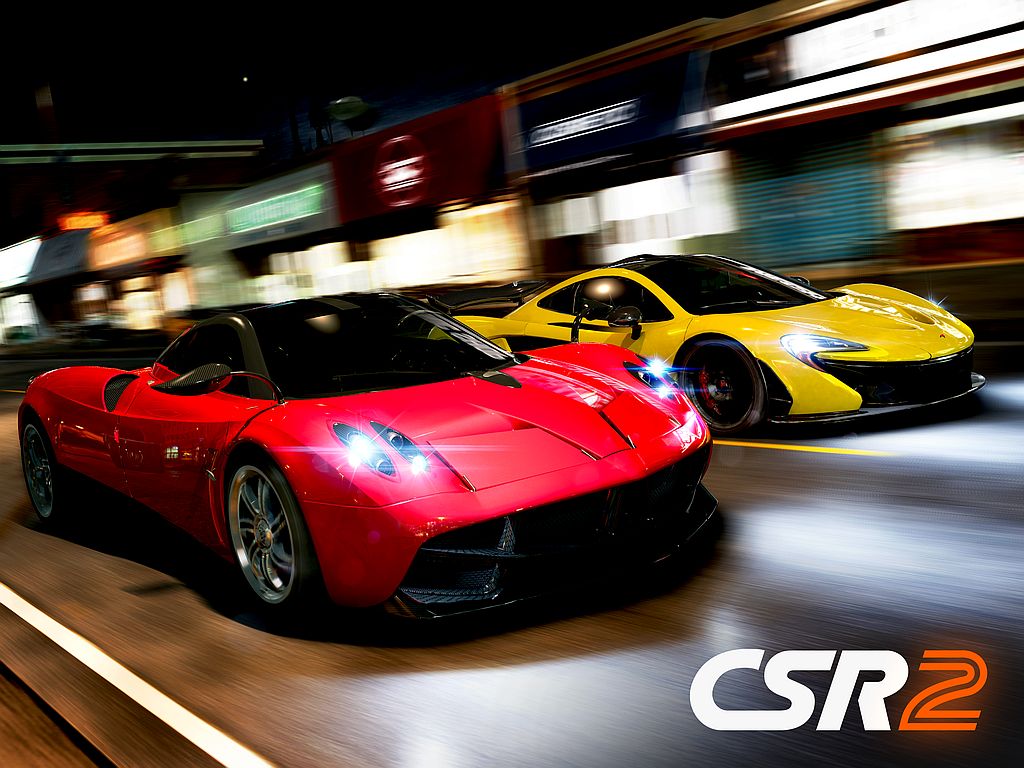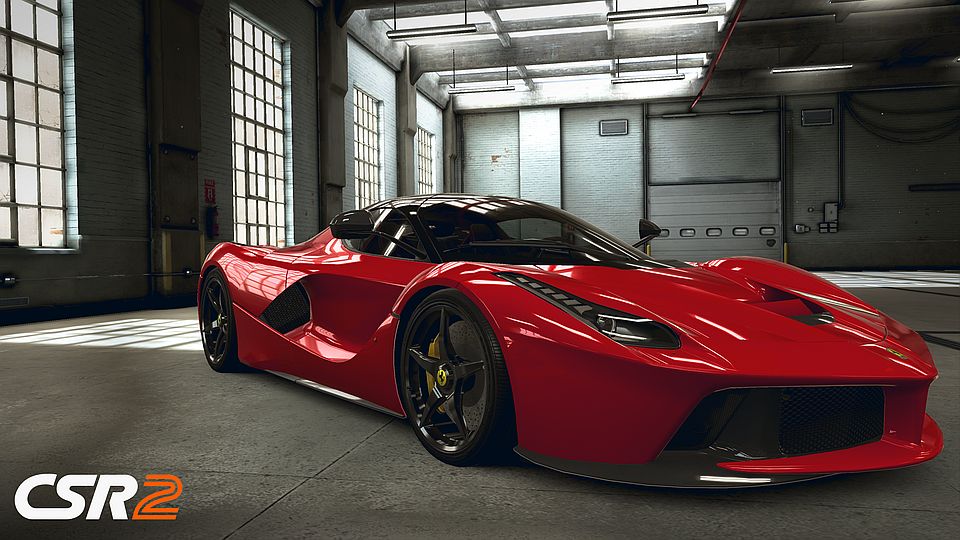While PC and console games are forever pushing the envelope of graphics, so have mobile games — and they started from a place well behind other platforms. Still, the relentless pressures of advancing mobile technology have meant rapid progress for mobile game graphics, and one of the companies on that cutting edge is NaturalMotion (now owned by Zynga), known for top games like Clumsy Ninja, My Horse, and CSR Racing. Now NaturalMotion is speeding past console-quality graphics with CSR Racing 2, which boasts graphics that surpass what you can see on even the latest consoles.
This really marks a milestone for mobile games, which have become the largest single sector of the game industry judging by both revenues and audience size. Now the graphics quality difference is being erased in many ways, and this has huge implications for the future of gaming. “CSR2 lets players experience the thrill of attaining not just one, but a whole garage of the most desirable cars on the planet, and it feels as close as possible to the real thing. That’s because each car, down the stitching on the seats, is built without compromise to its real-world beauty, integrity and authenticity,” said CEO Torsten Reil on his blog. The game not only provides you with the ability to collect cars, but to drag-race them with similar graphic fidelity, and adds multiplayer and social features to the game as well.
NaturalMotion CEO Torsten Reil spoke with [a]listdaily about this accomplishment and what it means for mobile games. The game is entering soft launch soon for both iOS and Android.

With CSR Racing 2, do you feel you can be competitive with or even surpass console games in some respects with mobile games?
I think so. We’re now at the level where we are at the same quality as console, but actually in some ways we’re going beyond that. We are running at higher resolution than even a full HD next-generation console — 2.1 megapixels on a next-generation console at 1080p versus 3.1 [megapixels] on an iPad Air 2, and that’s with all of the graphic techniques going on. So we don’t have to compromise. We actually have multiple cars on at the same time, no compromise in frame rate, level of detail, nothing. That’s a testament both to the team that’s working on this and also just to the sheer processing power that’s now available.
The techniques we know from console we can now apply on mobile. I think that’s pretty exciting. We don’t have to say “Looks great for a mobile game” we’re now saying “this looks great, even for a console game.” I think we’re going to see that trend continue. Partly because the frequency of generation updates on mobile is way, way higher than it is on console — every twelve months, versus every five years on console.
Aside from the graphics of CSR Racing, have you advanced the other aspects of the CSR2 design as well, particularly for muliplayer and social features?
Today we’re not talking about that yet. But there are all kinds of things we wanted to do with the original game that we can now do with this game. I think it’s fair to say that the social side is very important to us, not least because we’re part of Zynga and we don’t want to compromise on social, and it’s very important to us that people can play cooperatively as well as competitively. We’ll have more to announce about that further down the line.

The market has changed even in the relatively short time since CSR Racing came out. Has anything changed in your approach to monetization in the game?
Some things have stayed the same, other things have changed. The way we approach monetization, in terms of making sure that people don’t have to spend money, you should be able to enjoy the game for free without feeling the pinch too strong. That’s really important for us. We’ve said that about CSR Racing, Clumsy Ninja, and other games. That’s our number one rule. At the same time, CSR Racing was a game that had monetization at a basic level with very high volume, but we didn’t necessarily give people the opportunity to really invest in the game at a very deep, meaningful level — which other games, obviously in the action-strategy genre, are doing. That’s something that is going to change in CSR2. It will allow us to give players who really want to have a deep investment experience in CSR2 that experience.
There are players, we call them VIPs, who want to invest in the game. They like the experience, they want to find a way to invest, buy what they want and build what they want. Restricting that is not good, because you’re not giving players what they want, and you’re also restricting the monetization potential.
Are you trying to attract racing game fans, or people who like to collect cars? How big an audience can you reach?
That’s an interesting one. This is a racing game, but this is also a game for car lovers. The people who love cars, that number is even higher than people who like racing as a sport. That was the trick of the first CSR Racing as well. If you have a mobile phone, chances are that if you like cars you’ll find that CSR or CSR2 will serve that.
They are a lot of people who love cars that are not racers, it’s not for them about how to hit this apex perfectly. That’s a subset of that group. It’s exciting, but it’s not really the biggest part of the market. With a game that’s about cars, you have to make sure the cars are beautiful. We’ve been able to make this big visual leap, and I believe that’s going to help us in the believability of the cars. It’s also true that a good-looking game helps with downloads. We knew that from CSR Racing just the visuals helped massively. With Dawn of Titans, we launched the trailer for that game not too long ago and it now has over one million views on YouTube, which is organic — and it’s all gameplay footage. Visuals attract people, and I think that’s great. Visuals need to work for the game, but just visuals for visuals sake are of no use.
Most mobile games are treated as ongoing development projects rather than the model of regular sequels we see in console games. CSR Racing 2 is a sequel, which is something rare in the mobile game business. Why did you create a sequel to CSR Racing, and do you think sequels will be seen more often in mobile games?
That’s a very good question. This is the reason — the game is really quite different from the first one. It would have been difficult to sell to the player for the same app that this is the same thing, since it really is quite a big jump forward. There’s a second, pragmatic side to it, and that is there are a lot of players still playing CSR1, and they have invested a lot in that experience. We need to be able to let them still play that. We are of course thinking a lot of players will move to CSR2, but we also now that a lot of people have big garages in CSR1 and we want to make sure they can keep it.
Will there be more sequels in the industry Possibly. It depends. Wherever it’s possible to make a big leap in the experience, that has a new game design and maybe a completely new engine and visuals, a sequel makes sense.

